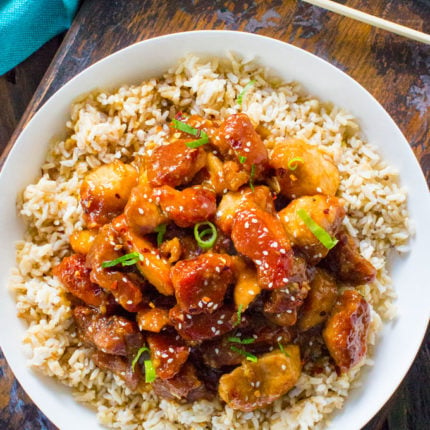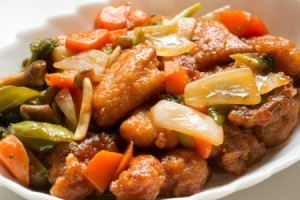

A related Hong Kong/ Cantonese-based dish is sweet and sour spare-ribs (Chinese: 生炒排骨 pinyin: Shēngchǎo páigǔ Cantonese Yale: sāangcháau pàaigwāt lit. 'rumbling meat') is made with vinegar, preserved plums and hawthorn candy for an almost scarlet colour and sweet-sour taste. The original Cantonese sweet and sour pork ( traditional Chinese: 咕嚕肉 simplified Chinese: 咕噜肉 pinyin: gūlūròu Cantonese Yale: gūlōuyuhk lit.

He suggests the more acidic white rice vinegar could be replaced with apple cider vinegar, and ketchup and Worcestershire sauce should be of renowned gourmet brands. Hong Kong's gourmet Willie Mark Yiu-Tong (better known as Wei Ling|唯靈), himself a long-time friend of Leung, suggests to contemporary eateries not to resort to cheap bulk manufactured versions of vinegar, ketchup, and Worcestershire sauce, or the sauce will risk being too sharp in taste and might break the balance of flavours. The late renowned chef from Hong Kong Leung King included the following as his sweet and sour source sauce recipe: white rice vinegar, salt, Chinese brown candy, ketchup, Worcestershire sauce, and dark soy sauce. Ĭantonese sweet and sour sauce is the direct ancestor of the sauce of the same name in the West, and was originally developed for sweet and sour pork. Sometimes a paste made from tomatoes is used but this is rare and normally restricted to Western cooking. In China traditionally the sauces are made from mixing sugar or honey with a sour liquid such as rice vinegar, soy sauce, and spices such as ginger and cloves. This dish combines salad vegetables such as cucumber, tomato, bell pepper, and onion with a mixture of pineapple (or pear), vinegar, and sugar to make a cold served dish. Not all dishes are cooked some, such as "sweet and sour fruit and vegetable" salad from the eastern regions of China, also find their way in Chinese cuisine. There are, however, some dishes, such as the Cantonese sweet and sour pork or loong har kow (sweet and sour lobster balls), in which the meat is cooked and a sauce added to the wok before serving. This style of using sauces is popular amongst Chinese who tie certain sauces to particular meats such as chili and soy for shrimp and vinegar and garlic for goose. Many places in China use a sweet and sour sauce as a dipping sauce for fish and meat, rather than in cooking as is commonly found in westernized Chinese cuisine. Some authors say that the original sweet and sour sauce ( traditional Chinese: 糖醋醬 simplified Chinese: 糖醋酱 pinyin: tángcùjiàng) came from the Chinese province of Henan, but the sauce in this area is a light vinegar and sugar mixture not resembling what most people, including the Chinese, would call sweet and sour. It included many sweet and sour adjacent dishes and recorded that they were invented by Chancellor Wei Juyuan under Emperor Zhongzong of Tang when he hosted the Emperor at his house.

One of the earliest recordings of sweet and sour may come from《燒尾宴食單》, a menu of the food served in Tang Dynasty (618-907) "Shaowei banquet " festivals written in 708. Sweet and sour dishes, sauces, and cooking methods have a long history in China. Sweet and sour bid-bid ( Pacific tenpounder) balls


 0 kommentar(er)
0 kommentar(er)
